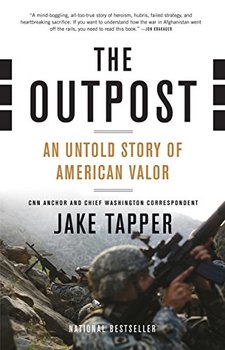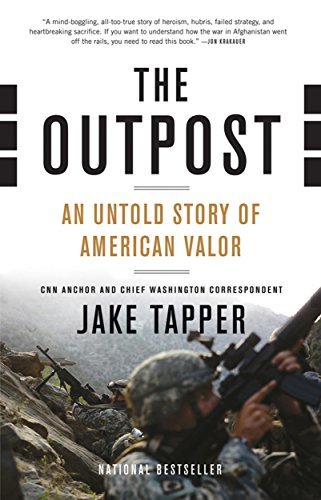
This is the second of two reviews of recent books that deal with the U.S. military at war. In a previous post, I reviewed Kill Anything That Moves: The Real American War in Vietnam, by Nick Turse, which presents a dramatically different perspective on the subject by documenting the widespread atrocities committed by American troops four decades earlier.
Estimated reading time: 6 minutes
Christians are urged to “hate the sin, love the sinner.” Difficult as that may be to believe in many circumstances, the distinction between action and actor seems to be the only way to reconcile honor and support for American troops at war with the horrific acts they so often commit overseas. One recent book, award-winning journalist Nick Turse’s Kill Anything That Moves, fastens our attention on the numberless atrocities carried out by the U.S. military in Vietnam directly as a result of policies handed down from the top (the White House and Joint Chiefs of Staff).
Turse shows how the military’s racist emphasis on the “body count” led directly and inevitably to the routine and indiscriminate murder of civilians throughout Vietnam. Rank-and-file soldiers (“grunts,” non-coms, lieutenants, captains, majors, light colonels) had little choice but to either participate in the slaughter or stand silently by. Doubtless, some enjoyed the opportunities for cruelty, but the overwhelming majority assuredly did not. Because for all intents and purposes the atrocities weren’t their “fault,” we could still honor and support them no matter how much we despised their heedless leaders.
The Outpost: An Untold Story of American Valor by Jake Tapper (2012) 665 pages ★★★★☆
Writing from a totally different perspective — from the ground up rather than top down — Jake Tapper relates the story in The Outpost of the men (and very occasionally, the women) who cycled in and out of an isolated combat installation in northeastern Afghanistan from 2006 to 2009. As in Kill Anything That Moves, we find soldiers in the field up to the rank of lieutenant colonel captives of policies set at much higher levels. They frequently display outstanding courage and suffer the deprivations of life in a harsh and hostile environment largely in silence, victims of George W. Bush, Dick Cheney, and Donald Rumsfeld’s deliberate decision to under-resource American forces in Afghanistan from the moment they invaded the country.
However, the fatal decisions that sealed the fate of so many of the troops on the ground at what came to be named Combat Outpost Keating were a colonel’s decision to site the installation at what one visiting officer called the worst base location he’d ever seen and Afghan president Hamid Karzai’s insistence that the post not be closed until after he was reelected.
A history of the Afghanistan war writ small
The story told in The Outpost relates the history of the Afghanistan war writ small. At its creation, Combat Outpost Keating was the northernmost U.S. installation in the country’s northeast, the first in the province of Nuristan, a historically and linguistically distinct enclave with a reputation for fierce hostility toward all outsiders. It was placed in an exceedingly vulnerable location in a valley, surrounded on three sides by steep mountains, against the advice of virtually every officer who viewed the site from the air. The colonel in command of U.S. forces in that region insisted on placing it there anyway, since it had easy access to a road that could be used to supply it, saving precious airborne resources.
However, in short order it became clear that the road was both indefensible, because every convoy was ambushed by insurgents, and impassable by any vehicles with a wide wheelbase (such as Humvees). Only when one heroic officer was killed trying to prove to his superiors just how treacherous the road really was did the Army stop attempting to supply the outpost by truck. Nonetheless, the outpost itself remained where it was instead of being moved high up into the mountains (as the troops on the ground kept requesting), because no commanding officer wanted to cede territory on his watch. And the number of troops assigned there, which was inadequate to begin with, was gradually reduced because of the scarcity of military resources.
The on-again, off-again counterinsurgency strategy
Eventually, when a new unit came onto the base, a brilliant junior officer implemented the counterinsurgency policy associated with General Petraeus, managing to bring attacks on his troops to a halt for more than half a year. Then he was replaced by a soldier who was critical of the policy, reversed course, and saw his hostility to the local people returned in spades. Finally, orders came down to abandon the outpost, but spies among the Afghan soldiers living there reported the preparations to the Taliban.
In short order, days before the planned evacuation date, several hundred mujahideen surrounded the 53 Americans, fought their way into the outpost, and succeeded in killing seven of them and wounding eleven. Only one of the Afghan soldiers chose to fight; all the others either fled or hid. The Taliban was only driven back by the heroism of the defenders — and the extravagant use of airpower, including Apache attack helicopters, A-10 warthogs, F-15 fighter jets, and even a B-1 bomber dropping 2,000-pound bombs. After a decent interval, the outpost was abandoned and bombed to smithereens by American planes.
Think about the broad strokes in that picture. Doesn’t it resemble the history of U.S. involvement in Afghanistan as a whole?
Honoring the courageous soldiers who served in Afghanistan
Clearly, Jake Tapper wrote The Outpost to honor the brave soldiers who were assigned there. He cites the name and rank of virtually every soldier whose actions are part of the four-year story — and there appear to be hundreds of them. For the major actors on the ground, chiefly sergeants, lieutenants, and captains, with a smattering of low-ranking non-coms, Tapper features extensive biographical information, sometimes including interviews with spouses. These soldiers rise fully formed from the pages of the book — real people, with self-doubts and passions and convictions all their own.
Tapper’s effort to convey a fully three-dimensional portrait of the soldiers at Combat Outpost Keating is both the book’s greatest strength and its greatest weakness. Reading this book seems to convey about as accurate a picture of what life is like on the front line of the Afghanistan war as words might convey. The weakness lies in the use of so many individual names. In the course of the four years the outpost existed, four different units cycled in and out, each bringing its own cast of dozens of characters. It becomes tedious to follow all the individual stories because there is so much coming and going. To some degree, it’s easier to follow a few of the Afghan leaders in the nearby villages, because they generally stay where they are.
Tapper is a former White House correspondent for ABC News and is now an anchor and chief Washington correspondent for CNN.
For related reading
I’ve also reviewed The Afghanistan Papers: A Secret History of the War by Craig Whitlock (The lies they told us about the Afghanistan War).
You may enjoy browsing through 20 top nonfiction books about history.
If you enjoy reading history in fictional form, check out 20 most enlightening historical novels.
And if you’re looking for a broader view of human history, check out New perspectives on world history.
For more good books on the history of the US, see Top 20 popular books for understanding American history.
And you can always find my most popular reviews, and the most recent ones, on the Home Page.



























